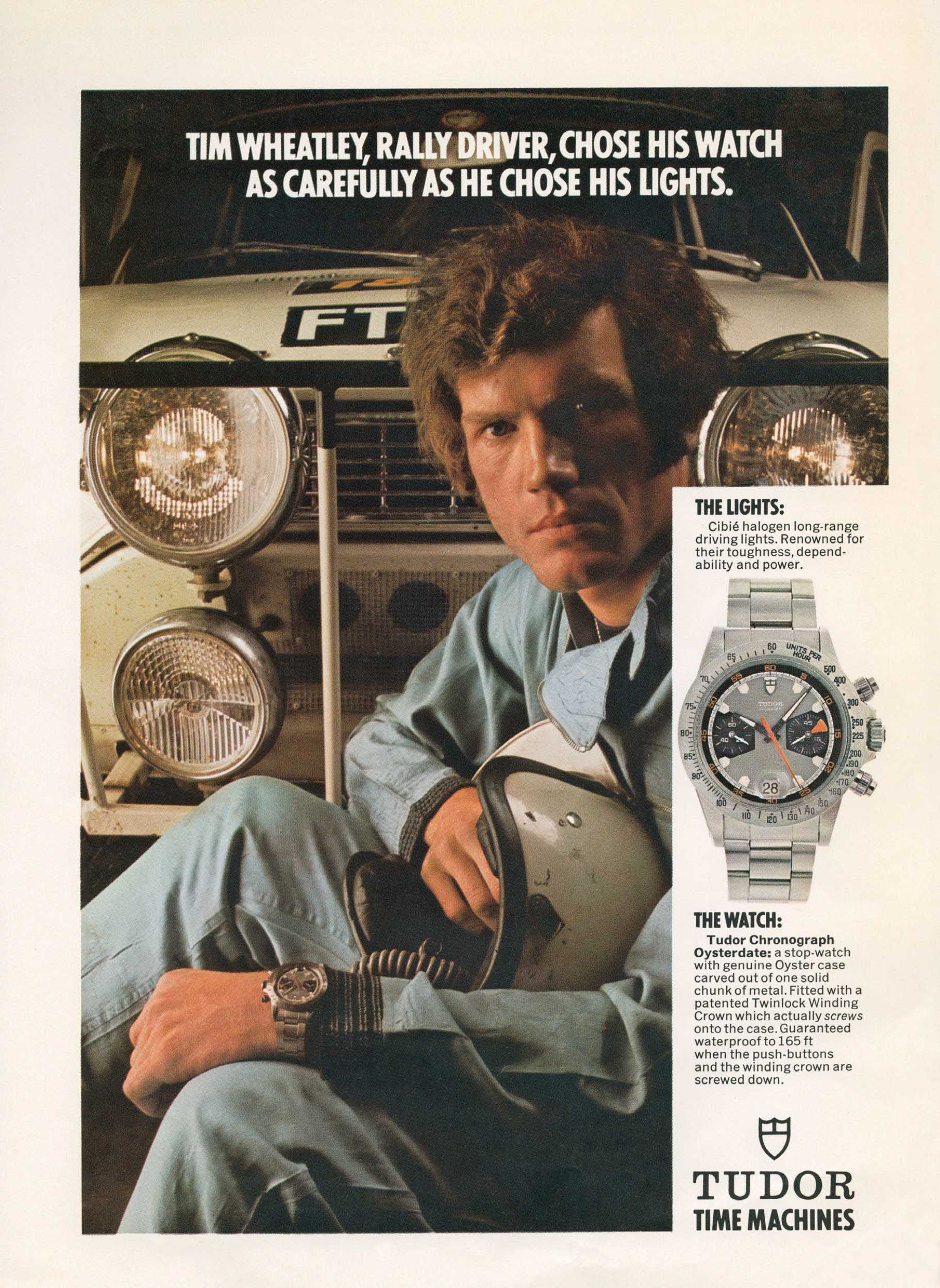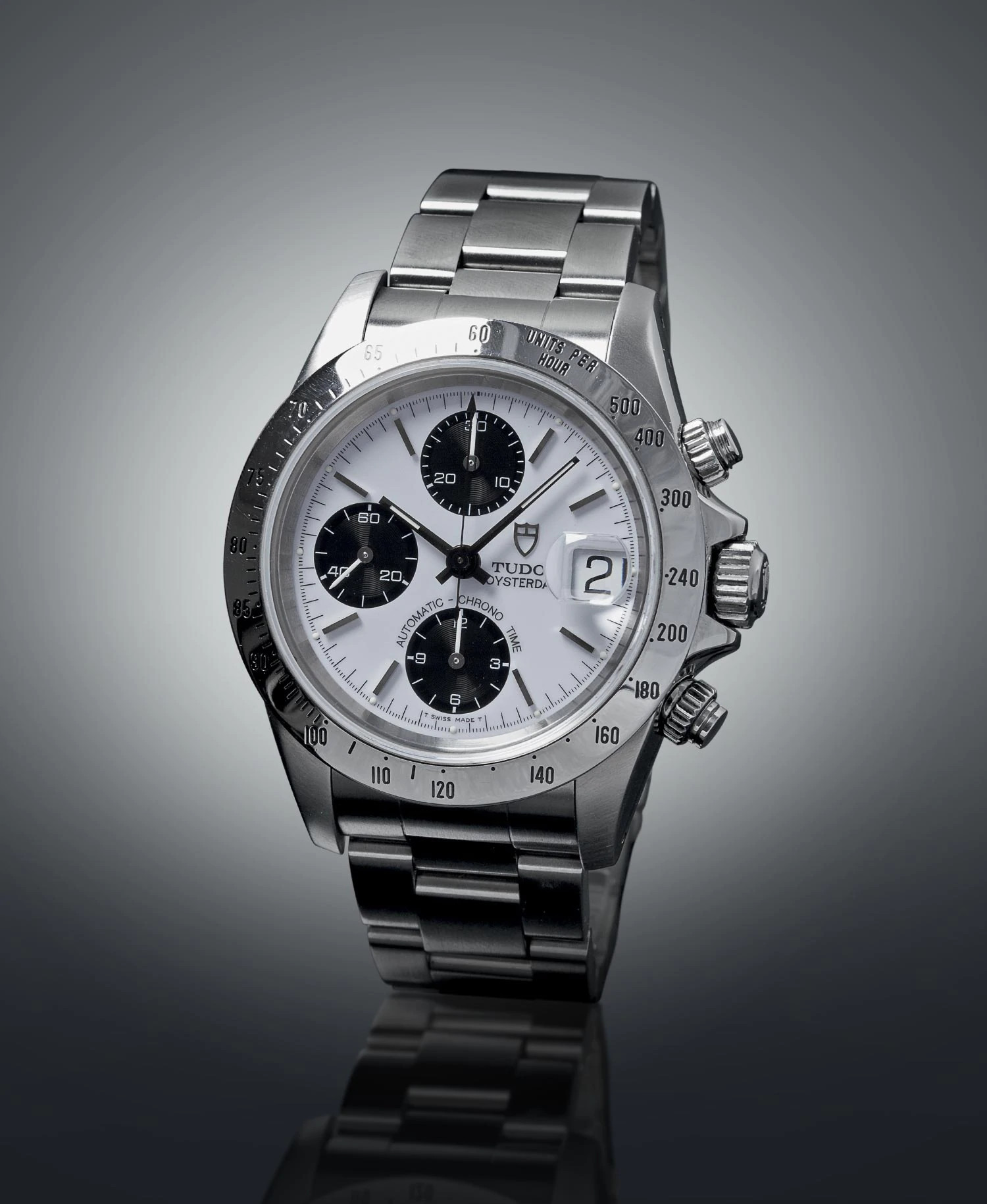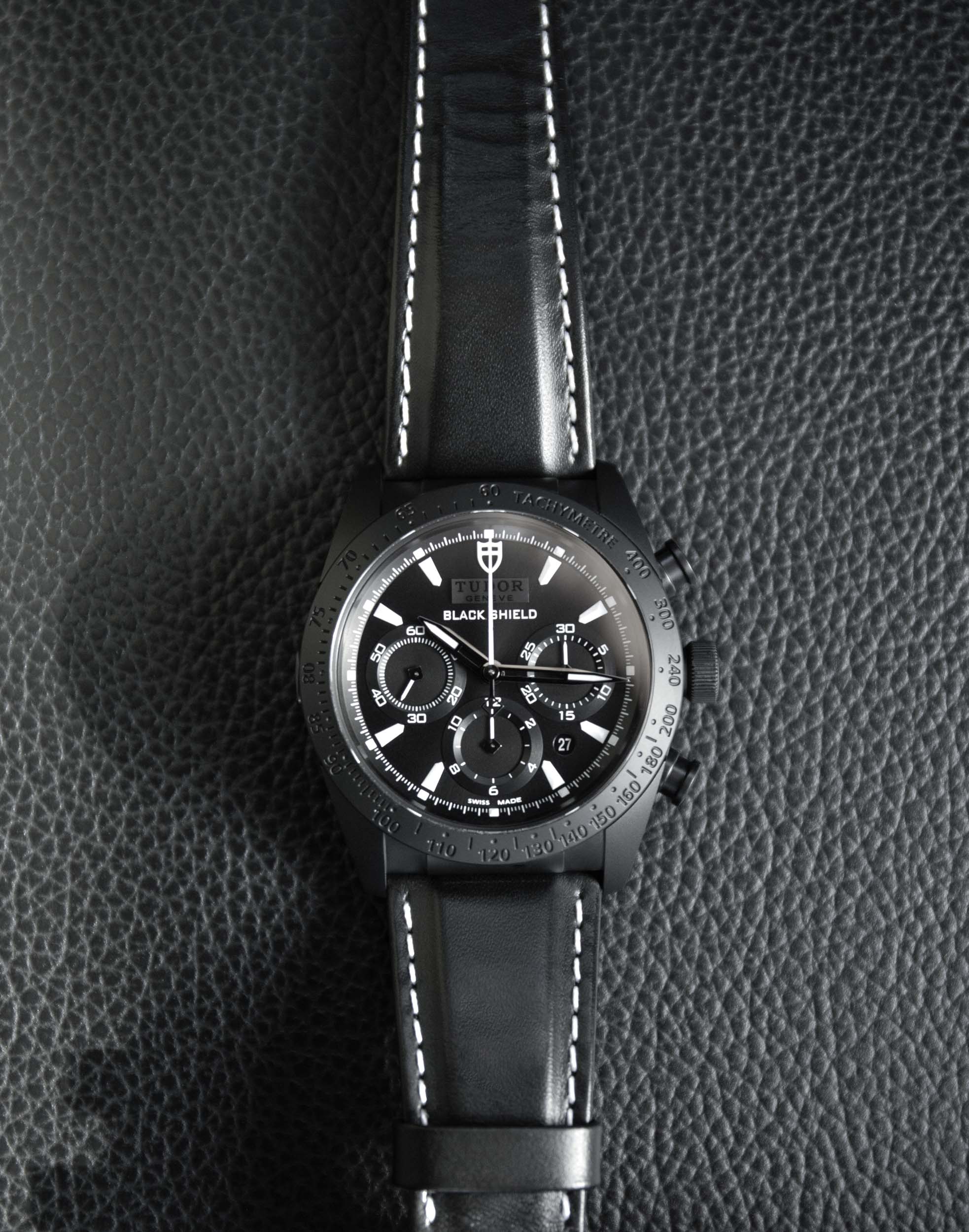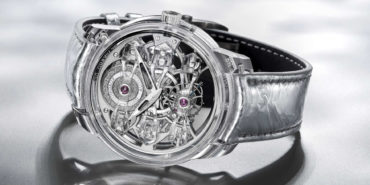Collector’s Guides • 26 Jun 2020
Tudor’s History of Chronographs
It was 50 years ago this year that Tudor presented its first chronograph to the market: the seminal Oysterdate Series 7000 (you may also know it as the “Homeplate”, its nickname among watch enthusiasts). Since the Homeplate’s launch, Tudor has also periodically released a generous selection of chronographs that have very much become horological icons in their own right. To celebrate half a century of Tudor chronographs, and the introduction of the company’s newest models, The Hour Glass is exploring the company’s extensive catalogue, from the original Oysterdate to today’s contemporary iterations.

The first Oysterdate chronograph, launched in 1970, marked a shift for Tudor. Not to be confused with the Rolex version (the two watchmakers are, after all, sister companies), the Oysterdate Series 7000, or the Homeplate, was very much in a class of its own. Its nickname was derived from the pentagonal hour markers that resembled the home plate on a baseball pitch. And, with its oversized case and sporty appearance, the Homeplate demonstrated a fresh approach to design that set the pace for the chronographs that followed.

There were two variations of the inaugural chronograph. Both carried the same movement (specifically, a Valjoux 7734 calibre with manual winding and cam chronograph mechanism) but each displayed a unique bezel: the first, the Reference 7031, had a Plexiglas disc over its bezel, as well as a 500-unit graduated tachymetric scale, which could be used to measure average speeds. The second was the Reference 7032, which had the same 500-unit tachymetric scale, only engraved into a brushed steel bezel. There was also a third version of the Homeplate that never went beyond the prototype stage.
From the “Monte Carlo” to the “Big Block”
The Series 7100, affectionately named the “Monte Carlo”, was released a year later. Its nickname reflected the fact that its dial bore a considerable resemblance to a roulette wheel, and it was the first watch to display Tudor’s signature shade of blue, featured on the dial and the coordinating bezel.

The year 1976 saw an exciting development for Tudor, with the company producing its first self-winding chronograph, the Series 9400. The watch became known as the “Big Block” thanks to its generously proportioned case, crafted as such to fit the self-winding movement’s rotor. There were three variations of the Big Block, but each contained the same Valjoux calibre 7750 mechanism.
In 1995, Tudor honoured its newest chronograph with a deviation from its conventional style. With the launch of the Series 79200, the bold, masculine lines of previous models were softened and the watch’s appearance became more restrained. The Series 79200 also welcomed gold and steel finishes, a leather strap, and sapphire crystal – thus bestowing upon it the nickname “Sapphire Chronograph”.

The 2000s marked the return of some of Tudor’s older models. In 2010, the Homeplate was reintroduced as a celebration of 40 years of Tudor chronographs. The new Homeplate took direct influence from the 1970 prototype that was never released with its pentagonal hour markers and hourly graduated rotating bezel, but was reworked for the contemporary wearer.

A few years later, the Heritage Chrono Blue was unleashed. Taking obvious direction from the Monte Carlo, the new watch featured identical blue accents and a dial inspired by the original timepiece. It was around this time that Tudor also introduced the Fastrider Black Shield to its chronograph collection, heralding a departure from the company’s usual aesthetic: the Fastrider Black Shield featured a monobloc ceramic case and slick, angular form.

The Black Bay Chrono
More recently, Tudor has returned to its design roots. The Black Bay Chrono, first introduced in 2017, blends the aquatic visual elements of previous Black Bay watches with a chronograph movement and appears very much in line with the chronographs that have come before it. True to its lineage, it has a bezel with engraved tachymetric scale and a robust expression. It also offers an impressive 70-hour power reserve, silicon balance spring, and a Manufacturecalibre chronograph MT5813.

Since the launch of the first Black Bay Chrono, Tudor has released two more variations: the Black Bay Chrono S&G and a limited-edition Black Bay Chrono Dark. The former bears the same superior mechanics as the original Black Bay Chrono, but incorporates a yellow gold bezel with matt black disc and yellow gold markings, yellow gold accents, and a steel and yellow gold bracelet. It is, without a doubt, a truly striking watch.

The latter is a very special timepiece that pays a tribute to the partnership between Tudor, the 2019 Rugby World Cup, and New Zealand’s national rugby team, the All Blacks. The Black Bay Chrono Dark has a sleek, (near) all matt black look with contrasting silver and white detailing. The watch’s intention is to celebrate each and every player who has been selected for the national team since its inception in 1884, meaning only 1,181 watches have been released. The idea is to expand the series as more players come aboard.
Needless to say, the newest Tudor chronographs are very fine additions to the company’s catalogue: their mechanics are nothing short of impressive, and their presentation is sporty, robust and authentically Tudor.










